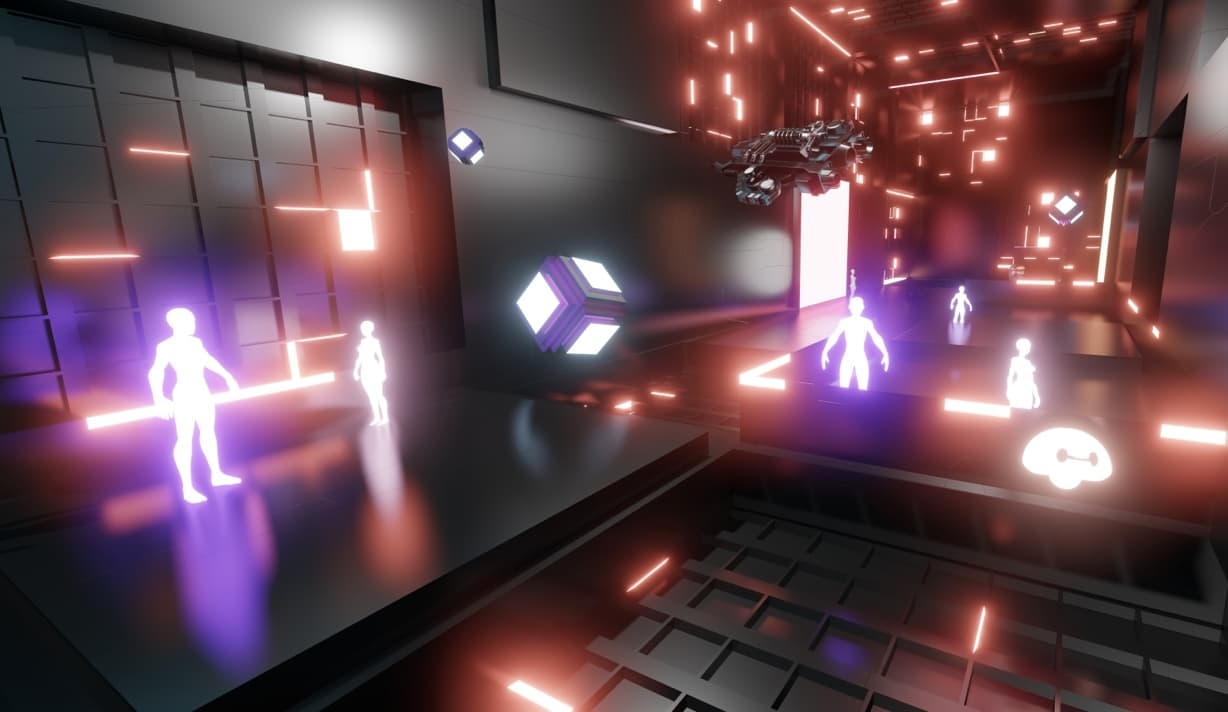Metaverse 101: What is the metaverse?


The obsession around the internet’s favorite buzzword has reached a fever pitch, leaving some people asking: “What exactly is the metaverse?” Although opinions on exactly how to define the concept still vary, it seems nearly everyone wants in on the action.
Simply stated, the metaverse is an evolution of the internet—a virtual immersive space for gathering, learning, connecting and buying. And, similar to the birth of the internet, it will influence how we work, play and interact.
In a May 17, 2022 Forbes article, Amber Allen, Forbes Technology Council Member, Founder & CEO of Double A Labs, defines the metaverse as an open ecosystem of tools that allows users to immerse themselves in digital environments and experience the world in new, impactful ways.
Metaverse basics
To get your mind around today’s metaverse, you need to become familiar with the vernacular.
Blockchain: A secure, decentralized system that records transactions or interactions. Think of it as a gigantic ledger in the Cloud hosted by a network of computers rather than a single server.
Web3: The immersive third generation of the internet where websites and apps will be able to process information in a human-like way through technologies, such as AI and Big Data. It uses the blockchain to store, share and own information.
Cryptocurrency: A form of currency that exists digitally or virtually. It is a means of storing and/or transferring value.
NFT (Non-Fungible Token): A unique digital token that is a certificate of authenticity and is stored on the blockchain. It is a certifiable, secure documentation of ownership of a digital asset or an experience.
The metaverse is a multiverse
When you hear “the metaverse,” it may sound like one sweeping virtual destination. In fact, it’s a multiverse that exists across a number of digital platforms, typically the 3D gaming kind where consumers—or brands—can easily build virtual worlds. On one hand, you have gaming platforms like Roblox and Fortnite, where all aspects of the digital world are centralized and controlled by a single company. On the other, you’ve got platforms like Decentraland and The Sandbox that are actively pursuing a decentralized metaverse.
You don’t have to be a gamer or wear special glasses to embrace the metaverse, although there is a good reason why you might think so. “It all started with gaming,” explains Bob Bonniol, Chief Creative Officer at MetaMode Studios. “Gaming platforms have led the way in both creating immersive experiences and modeling for us what that would look like, bringing the vision of the metaverse into the mainstream. They built the prototype and cracked community engagement!”
Are we there yet?
Today, much of the hype around the metaverse is conceptual, with tech giants painting their vision of the future. The reality is that we still have a ways to go to shift to a truly open ecosystem. In addition to accessibility of the hardware, interoperability is vital for the metaverse to work. This will allow users to bring their favorite virtual tools, like avatars, wardrobes and cars, as they “travel” from platform to platform. As these users travel the metaverse, safety will become paramount. Privacy issues and commercial challenges will also need to be addressed.
The metaverse may still be in its infancy, but the marketing opportunities it presents are vast. In a future post, we’ll explore some of the innovative ways that brands are embracing these technologies. Stay tuned!